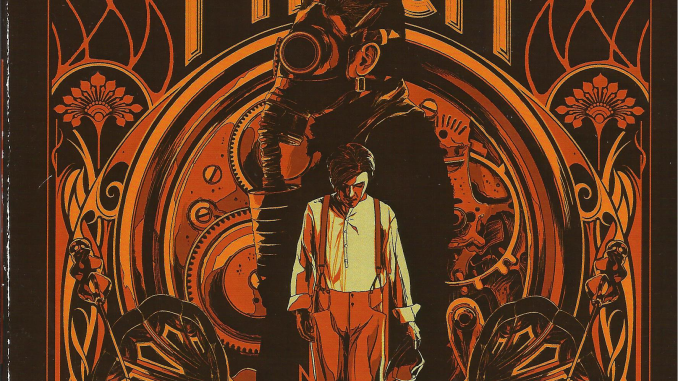
 As part of our ongoing collaboration with the Book House of Stuyvesant Plaza, our writers have accepted the challenge of reading and reviewing pre-publication review copies of highly anticipated young adult literature. The reviews are posted here for our readers, but also will be sent to the Book House where they will hopefully be used to inform customers about the books they may want to purchase.We will try to publish one review a week for the spring.
As part of our ongoing collaboration with the Book House of Stuyvesant Plaza, our writers have accepted the challenge of reading and reviewing pre-publication review copies of highly anticipated young adult literature. The reviews are posted here for our readers, but also will be sent to the Book House where they will hopefully be used to inform customers about the books they may want to purchase.We will try to publish one review a week for the spring.
The reviews contain spoilers, so be forewarned!
The Death and Life of Zebulon Finch
by Daniel Kraus
Published October 2015
642 pages, Simon and Schuster
“The Death and Life of Zebulon Finch” is written by Daniel Kraus, an award winning author of a selection of different fiction works, with one of the more well known ones being Troll Hunters, which was co-written with famous filmmaker Guillermo del Toro. Daniel Kraus is a respected literary writer who uses imagery and metaphor.
In this thrilling adventure story, we, the readers, follow the adventures of Zebulon Finch, a youngster, who after being involved in a series of unfortunate dealing, was shot and killed in Lake Michigan, after which he promptly came back to life. Following this, he undergoes both a physical and mental journey whereby he, being stuck in an teenage state of mind, explores society and eventually develops into a more mature character. His initial travels bring him into a traveling freak show, where he undergoes torturous acts to showcase his “resilience”, which was in this case supposedly the doing . However, he eventually manages to flee it, after a duel wherein he is shot multiple times (and does not die), which essentially allows him to escape. Afterwards, he approaches a surgeon by the name of Dr Leather, who extensively studies Finch in an attempt to thwart death. All of these end in failure, and Finch is left psychologically scarred. He eventually escapes, and seeks a new life, but is caught up in the First World War. With his immortality, he quickly proves useful as a runner, and despite animosity in the beginning, makes a friend, Church, who would go on to be friends with him, even long after the war. Later after a muck up with the KKK involving smuggling whiskey, Finch’s past catches up with him, specifically in the form of Doctor Leather, who involves himself in a series of murders. Later, he involves himself with an acclaimed Hollywood star, with whom he develops an odd, yet friendly relation. However this gets him into trouble, as his slowly decaying condition begins to reveal itself.
The author skillfully uses the first person perspective to allow us sympathy for the narrator and his condition; this lets one feel far more submerged in the story than one might normally feel in a third person story. However, the story’s perspective sometimes switches to the narrator (Finch) speaking directly to the reader, which brings the story down to almost a second person point of view, although it stops short. The continual shifting of perspectives does make the story hard to understand and comprehend at times, but it does give the story a unique flair and dramatically increases interest in the story. The perspective plays a particularly important role in helping one understand the thought processes of our narrator during times of stress and duress, of which he undergoes many. Specifically, during his many fights in the First World War, we get a sense of how lonely and outcast the narrator is, both due to his unusual appearance, and his odd abilities. Also, this method of perspective gives us a closer insight into how his inflexible state of mind leads to problems with dealing with the unexpected, such as the arrival of his daughter, but at the same time helps show the progress he makes over the course of the long life he lives. This was done expertly, with Finch himself, speaking directly to the reader at intermittent intervals to speak of his follies and his limitations.
The story itself focuses around the theme of Finch’s continued immaturity, and how he deals with various situations despite this. He struggles throughout the story, as despite his physical age, he has not been able to move past his teenage mindset. He especially struggles when he realizes that he fathered a child with a prostitute, and he finds it difficult to deal with the responsibilities of fatherhood. This is exasperated by the fact that his daughter, Merle, is rebellious, and desires wealth and money beyond reason. He is unable to help Merle from falling into the same spiral of problems as he did, and she eventually will leave him, breaking his last connection to his original life. This would motivate him to participate in WWI, not a particularly wise decision considering his inability to heal from his wounds. However, during the course of this conflict, he does mature in some sense, and Church, first enemy then friend, suggests reasons for Finch’s continued survival, which was that he was left on the Earth to save some number of people, to atone for the deaths he caused as a teenager.
Finch thus grows to become somewhat more purposed, although once after the war, he is left aimless, as he plunges into the problems of the post-WWI world. Here, Finch’s experiences are a reference to the experiences of many like him, an entire generation who was lost to the war. This does mature him slightly, though his sense of the law does not follow suit, as he took part in a whiskey smuggling and manufacturing ring. Later on, he matures yet again, after meeting Church, who had been grievously injured at the end of the war, in the city. He manages, albeit with great difficulty, to convince Church that he should live a proper life, and to accept his mutilated body. This was a great leap of growth for him, and This pattern would continue. However, later when he is in Hollywood, he somewhat goes back to his old personality, though he seems to use it more for entertainment benefit than as an actual part of his personality. Overall, he does mature, though the storyline does somewhat focus on his lack thereof, and the issues caused by this.
